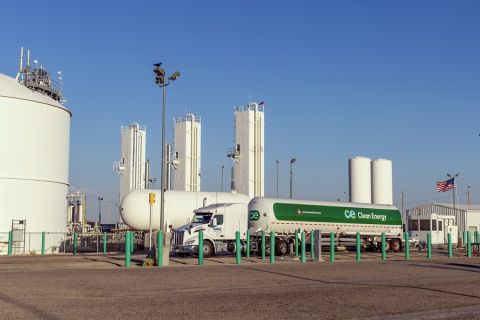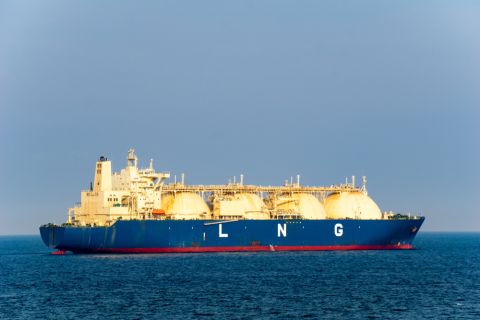U.S. natural gas futures eased about 1% to a two-week low on June 21 on a rise in output and forecasts for demand to decline in two weeks after the heat wave blanketing much of the country starts to break.
The price decline came even though last week's storage build was smaller than usual for a sixth week in a row and the latest forecasts were for more hot weather next week than previously expected.
Analysts said recent storage builds have been smaller than usual after several producers cut output earlier in the year after futures prices dropped to 3-1/2-year lows in February and March. Higher prices in recent weeks have prompted some producers to return to the well pad.
The U.S. Energy Information Administration said utilities added 71 Bcf of gas into storage during the week ended June 14.
That was close to the 69-Bcf build analysts forecast in a Reuters poll and compares with an increase of 92 Bcf in the same week last year and a five-year (2019-2023) average rise of 83 Bcf for this time of year.
Front-month gas futuresfor July delivery on the New York Mercantile Exchange fell 3.6 cents, or 1.3%, to settle at $2.7/MMBtu, their lowest close since June 4 for a second day in a row.
For the week, the front-month was down about 6% after easing about 1% last week.
Supply and demand
Financial firm LSEG said gas output in the Lower 48 U.S. states rose to an average of 98.2 Bcf/d so far in June, up from a 25-month low of 98.1 bcfd in May. That compares with a monthly record high of 105.5 Bcf/d in December 2023.
Analysts said the production increase, which started in late May, was a sign that some drillers were slowly boosting output after a 47% jump in futures prices in April and May. Prices were up about 5% so far in June.
On a daily basis, output hit a 10-week high of 99.6 bcfd on June 17. So far in June, CEOs at EQT and Chesapeake Energy said their companies have started to boost output.
Overall, however, U.S. gas production was still down around 7% so far in 2024 after several energy firms, including EQT and Chesapeake, delayed well completions and cut drilling activities when prices fell in February and March.
Chesapeake is on track to overtake EQT as the biggest U.S. gas producer after its planned merger with Southwestern Energy.
Meteorologists projected weather across the Lower 48 states would remain hotter than normal through at least July 6. LSEG forecast that heat would boost the amount of gas power generators burn to keep air conditioners humming.
LSEG forecast average gas demand in the Lower 48, including exports, will jump from 97.9 Bcf/d this week to 103.8 Bcf/d next week as the weather turns hotter before dipping to 102.8 Bcf/d in two weeks as the heat wave starts to break.
Gas flows to the seven big U.S. LNG export plants held at 12.9 Bcf/d so far in June, the same as in May.
That remains well below the monthly record high of 14.7 bcfd in December 2023 due to ongoing plant and pipeline maintenance at several Louisiana facilities, including Cameron LNG, Cheniere Energy's Sabine Pass and Venture Global's Calcasieu Pass.
Gas flows to the 4.5-Bcf/d Sabine were on track to drop to an 11-month low of 3.4 Bcf/d on June 21, down from 3.8 Bcf/d on June 20 and an average of 4.1 Bcf/d over the prior seven days.
Recommended Reading
Golden Pass LNG’s not so Golden Days
2024-07-10 - The $9.25 billion Golden Pass LNG project is arguably not having a golden moment at eight months behind schedule and some $2 billion over budget. Owners QatarEnergy and Exxon Mobil Corp. have begun damage control.
QatarEnergy, Exxon Seek to Remove Contractor from Texas Gas Project
2024-06-19 - Golden Pass LNG, a joint venture between QatarEnergy and Exxon Mobil, asked a U.S. bankruptcy court late on Tuesday to sever Zachry Industrial's $5.8-billion contract within five days, or allow it to take possession and control of the facility, which is about 75% complete.
Clean Energy Fuels Adds Third LNG Train at California Plant
2024-06-11 - Clean Energy Fuels Corp. said adding a third train to its LNG plant would increase its capacity by 50%, a move an analyst said could reduce the company’s reliance on third-party suppliers and increase annual EBITDA by $2 million.
The Biden Effect: LNG SPAs Fall 15% in First Half 2024 After Pause
2024-07-03 - Poten & Partners data show that the total volumes associated with LNG sale and purchase agreements fell by 15% in the first half of 2024 compared to the same period in 2023 following the Biden administration’s LNG pause.
Despite Sanctions Russia Still World’s Fourth Largest LNG Exporter
2024-05-23 - Russia ranked as the world’s fourth-largest LNG exporter in 2023, sending out cargoes of 30 mtpa. Russia’s LNG capacity could surpass 74 mtpa capacity by 2030, according to details published by Flex LNG.




